Developing a standalone trading system involves several steps, ranging from idea generation to implementation and testing. Here are the key steps in developing a standalone trading system:
1. Idea Generation and Conceptualization
2. Strategy Definition and Design
3. Data Acquisition and Preparation
4. Backtesting and Evaluation
5. Optimization and Refinement
6. Implementation
7. Testing and Simulation
8. Deployment and Live Trading
9. Monitoring and Maintenance
--------
IDEA GENERATION AND CONCEPTUALIZATION
Begin by brainstorming potential trading strategies based on your expertise, market insights, or quantitative analysis techniques.
Consider factors such as market trends, technical indicators, fundamental analysis, or statistical arbitrage opportunities.
STRATEGY DEFINITION AND DESIGN
Define the specific rules and parameters that will govern your trading strategy.
Determine the entry and exit criteria, position sizing rules, risk management techniques, and any other relevant factors.
Choose the appropriate timeframes and assets (e.g., stocks, forex, commodities) for your strategy.
DATA ACQUISITION AND PREPARATION
Acquire historical market data for the assets you plan to trade. This may include price data, volume, order book data, and any other relevant information.
Clean and preprocess the data to remove outliers, handle missing values, and ensure consistency across different datasets.
Consider incorporating additional data sources such as economic indicators, news sentiment, or alternative data to enhance your trading signals.
BACKTESTING AND EVALUATION
Implement your trading strategy in a backtesting environment using historical data.
Evaluate the performance of the strategy based on key metrics such as profitability, risk-adjusted returns, drawdowns, and win rate.
Perform sensitivity analysis to assess the robustness of the strategy across different market conditions and parameter values.
OPTIMIZATION AND REFINEMENT
Fine-tune the parameters of your trading strategy to optimize performance.
Use optimization techniques such as grid search, genetic algorithms, or machine learning algorithms to identify the optimal parameter values.
Be cautious of overfitting by validating the optimized strategy on out-of-sample data or using cross-validation techniques.
IMPLEMENTATION
Translate your trading strategy into code using a programming language such as Python, R, or MATLAB.
Develop the necessary infrastructure for data acquisition, order execution, and risk management within your trading platform.
Ensure that your code is modular, well-documented, and scalable for future enhancements or modifications.
TESTING AND SIMULATION
Conduct extensive testing and simulation of your trading system in a simulated or paper trading environment.
Verify that the system behaves as expected and handles various edge cases and error scenarios effectively.
Monitor performance metrics and validate the system's performance against historical and real-time data.
DEPLOYMENT AND LIVE TRADING
Deploy your trading system for live trading once you are confident in its performance and reliability.
Start with small trading capital or use a demo account to mitigate risks during the initial deployment phase.
Continuously monitor the system's performance in live trading and be prepared to make adjustments or optimizations as needed.
MONITORING AND MAINTENANCE
Monitor the performance of your trading system regularly and analyze trading outcomes to identify areas for improvement.
Stay informed about changes in market conditions, regulatory requirements, and technological advancements that may impact your trading strategy.
Maintain and update your trading system accordingly to adapt to evolving market dynamics and ensure continued effectiveness.
𝘽𝙮 𝙛𝙤𝙡𝙡𝙤𝙬𝙞𝙣𝙜 𝙩𝙝𝙚𝙨𝙚 𝙨𝙩𝙚𝙥𝙨, 𝙮𝙤𝙪 𝙘𝙖𝙣 𝙨𝙮𝙨𝙩𝙚𝙢𝙖𝙩𝙞𝙘𝙖𝙡𝙡𝙮 𝙙𝙚𝙫𝙚𝙡𝙤𝙥 𝙖 𝙨𝙩𝙖𝙣𝙙𝙖𝙡𝙤𝙣𝙚 𝙩𝙧𝙖𝙙𝙞𝙣𝙜 𝙨𝙮𝙨𝙩𝙚𝙢 𝙩𝙝𝙖𝙩 𝙞𝙨 𝙧𝙤𝙗𝙪𝙨𝙩, 𝙚𝙛𝙛𝙞𝙘𝙞𝙚𝙣𝙩, 𝙖𝙣𝙙 𝙘𝙖𝙥𝙖𝙗𝙡𝙚 𝙤𝙛 𝙜𝙚𝙣𝙚𝙧𝙖𝙩𝙞𝙣𝙜 𝙘𝙤𝙣𝙨𝙞𝙨𝙩𝙚𝙣𝙩 𝙧𝙚𝙩𝙪𝙧𝙣𝙨 𝙞𝙣 𝙛𝙞𝙣𝙖𝙣𝙘𝙞𝙖𝙡 𝙢𝙖𝙧𝙠𝙚𝙩𝙨.
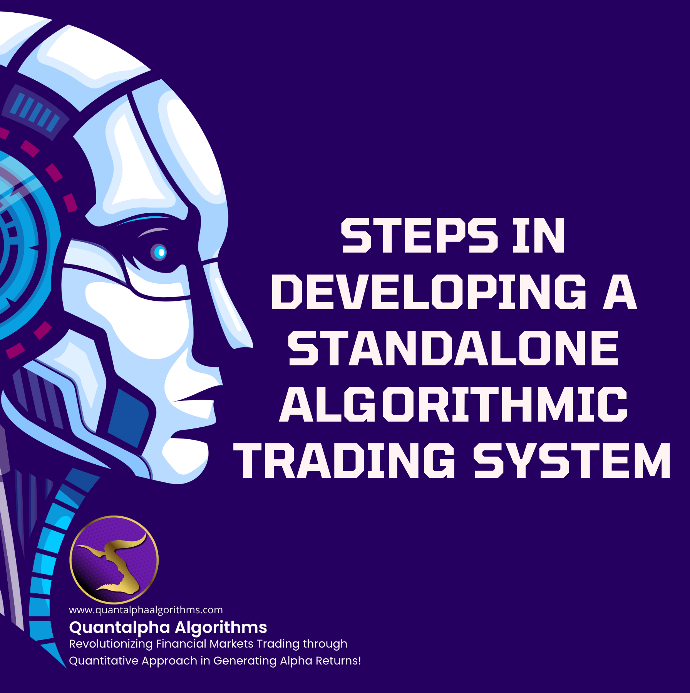




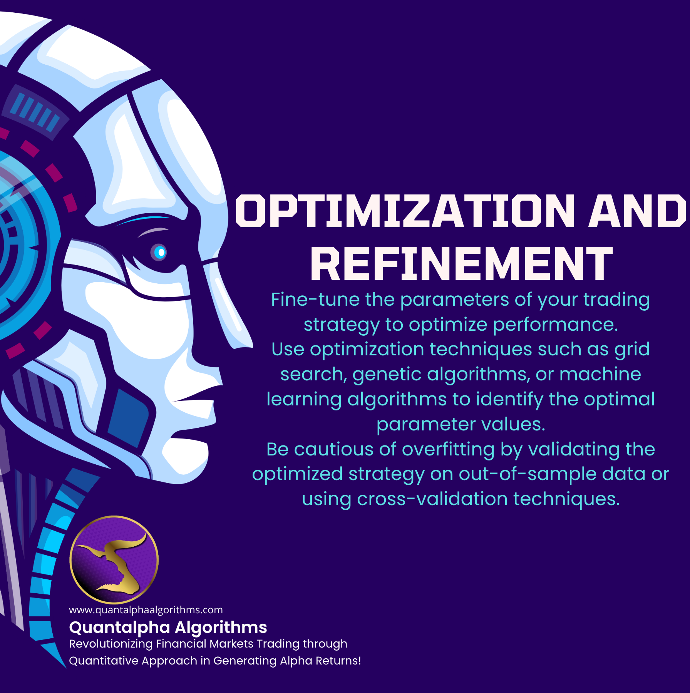
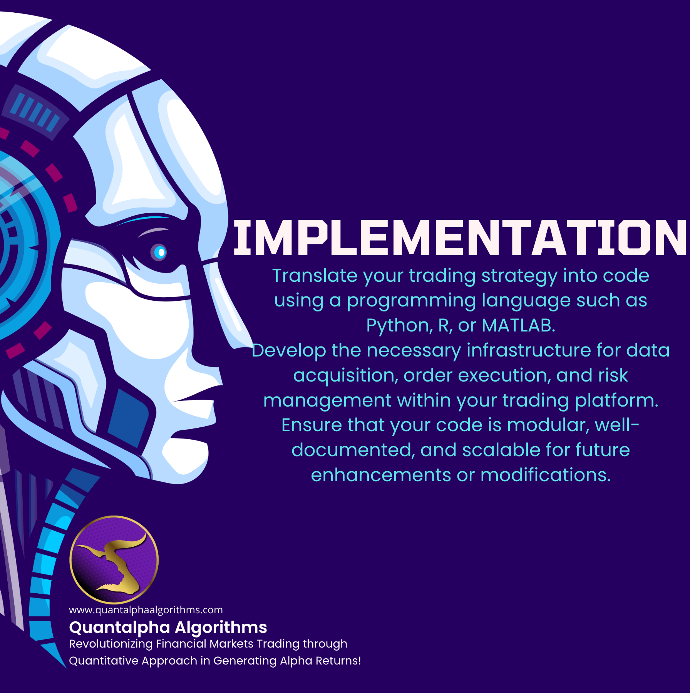

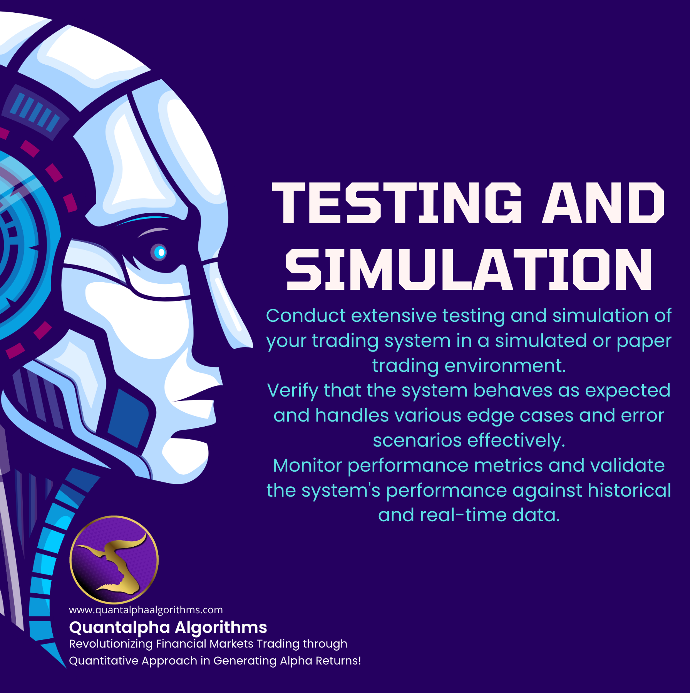
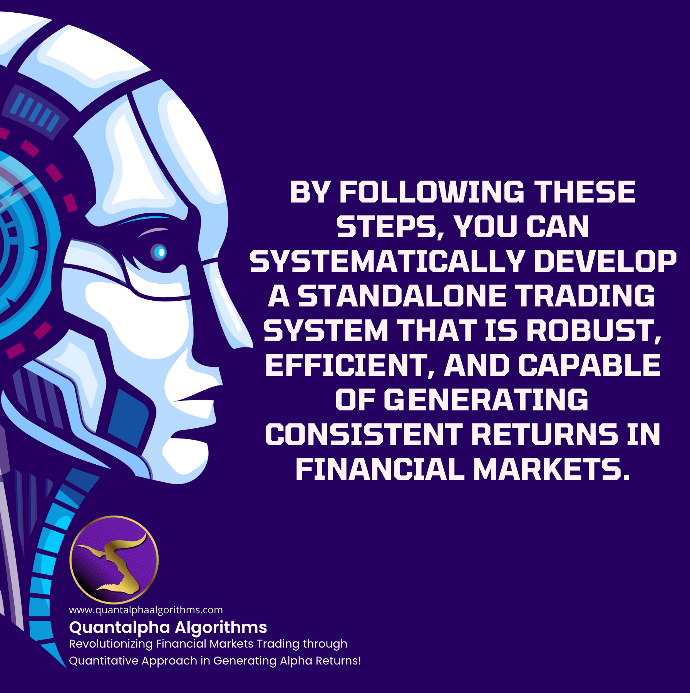
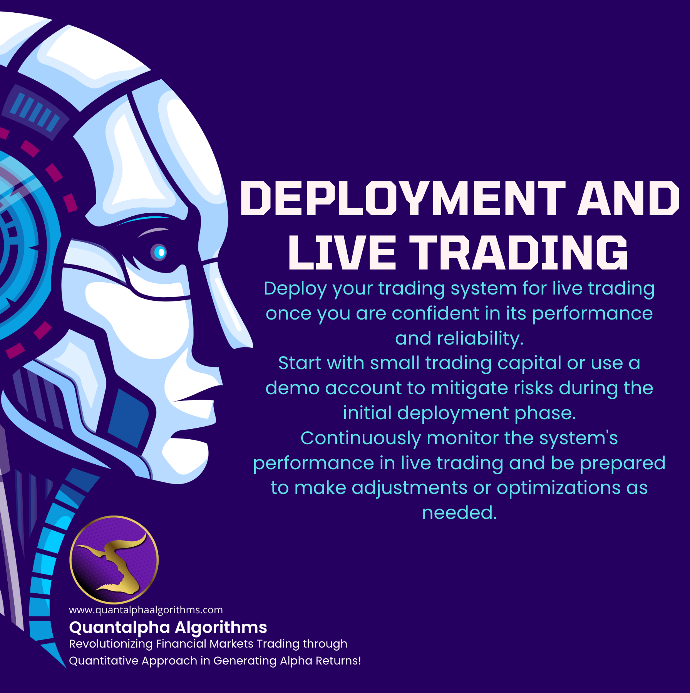
Steps in developing a standalone algorithmic trading system